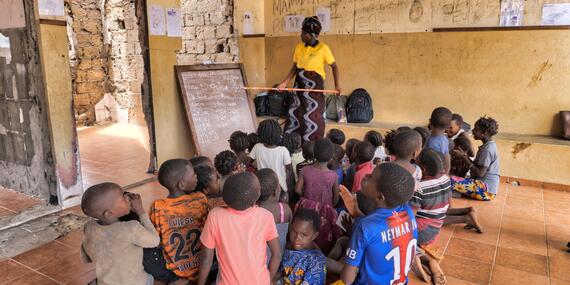
In June 2024, the security situation remained volatile with highly unpredictable movements of NSAGs. Reports indicate increased number of security incidents and movements of non-State armed groups...

More than 670,000 people remain displaced by the armed conflict in northern Mozambique. The displaced people have endured violence and multiple waves of displacement over the last few years and continue to rely on humanitarian assistance for survival as the majority do not have land tenure security.
Food insecurity further compounds the vulnerability of the internally displaced people, host communities and returnees alike. The latest Integrated Food Security Phase Classification (IPC) report projects a rise in acute food insecurity from 2.6 million to 3.3 million people between October 2023 and March 2024. This increase includes 220,000 people in IPC Phase 4, in Mocímboa da Praia and Meluco who comprise people displaced by conflict, host communities and returnees, who face similar socio-economic vulnerabilities. A significant number of health facilities have been damaged or destroyed, affecting the capacity to detect and respond to disease outbreaks, and to provide critical and timely care.
Mozambique is regularly exposed to cyclones, floods, and droughts, damaging private and public infrastructure. In 2023, Tropical cyclone Freddy, a record-breaking storm, hit Mozambique twice, causing destructive winds, extreme rainfall, and widespread flooding. The storm worsened existing flooding from its initial passage and heavy seasonal rains. Over 800,000 people were affected. For the 2023/2024 rainy season, the National Institute for Disaster Management estimates that more than 774,000 people are at risk of cyclones.
Droughts, which have become more frequent, are a dire concern for Mozambique, as 80 per cent of the population of more than 33 million depends on rain-fed agriculture.
In 2024, 1.7 million people will need life-saving and life-sustaining humanitarian assistance and protection in Mozambique. The number includes 1.3 million people in conflict-affected areas and another 429,623 people across the country, who have been exposed to the risks and impacts of extreme weather events. The unique needs of women and girls, children, and older people, as well as those living with HIV, will be prioritized.
The 2024 Humanitarian Needs and Response Plan for Mozambique seeks US$ 413 million to meet the needs of 1.7 million people. The plan aims to provide life-saving assistance, including protection services, shelter, food assistance, treatment for acute malnutrition, and emergency obstetric care. Humanitarian partners will also provide life-sustaining support for people whose access to assistance and essential services is compromised by the conflict.